An Illustrated History of Old Sutton in St Helens, Lancashire
Part 22 (of 95 parts) - Industry in Sutton Part 3 - Story of Sutton Mill
Researched & Written by Stephen Wainwright ©MMXX Contact Me Research Sources
Researched & Written by Stephen Wainwright ©MMXX
Old Sutton in St Helens
The Sutton Mill
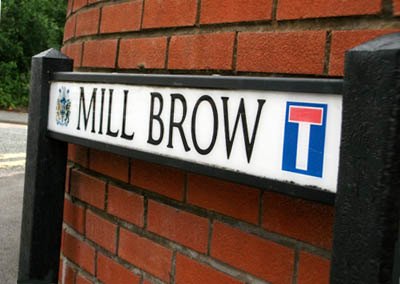
It was a corn water mill powered by water from the Pendlebury / Sutton Brook and the artificially created Sutton Mill Dam. It was also a steam mill and during its very early days a windmill was possibly on the same site (recent research by David Lamb suggests this).
When Sutton Mill first began milling corn isn’t precisely known, but it was probably during the mid-18th century. The first known references to the miller of Sutton are in church records located by the late David Lamb. David found that his ancestor Daniel Lamb (1743 – 1816) had been the miller from at least 1784 to 1789.
Daniel is also recorded as having been the miller of Bold from 1769 to 1782. In his research David queries whether this was an alternative reference to Sutton Mill. However this is unlikely as there was a separate Bold Mill within the Township of Bold and the grave of Daniel’s daughter Mary in Sutton Parish Churchyard reveals that she was born in Bold in 1780.
Daniel’s relocation to Sutton with wife Margaret (née Moyers) was the start of the Lamb family’s 80-year association with the mill. By the time of his arrival the windmill, that was believed to have on the same site, was probably disused and may have been pulled down by one of Daniel’s six sons. About 1789 his two eldest sons, James (1767 - 1805) and William (b. 1768), left Sutton to become millers at Wigan. However Daniel’s four other sons Robert (b. 1772), Henry (b. 1772), David (1782 - 1857) and Samuel (b. 1784), remained in Sutton and worked at the mill. Daniel died intestate in 1816 aged 72 and with no church in Sutton, the miller was buried in Great Sankey.
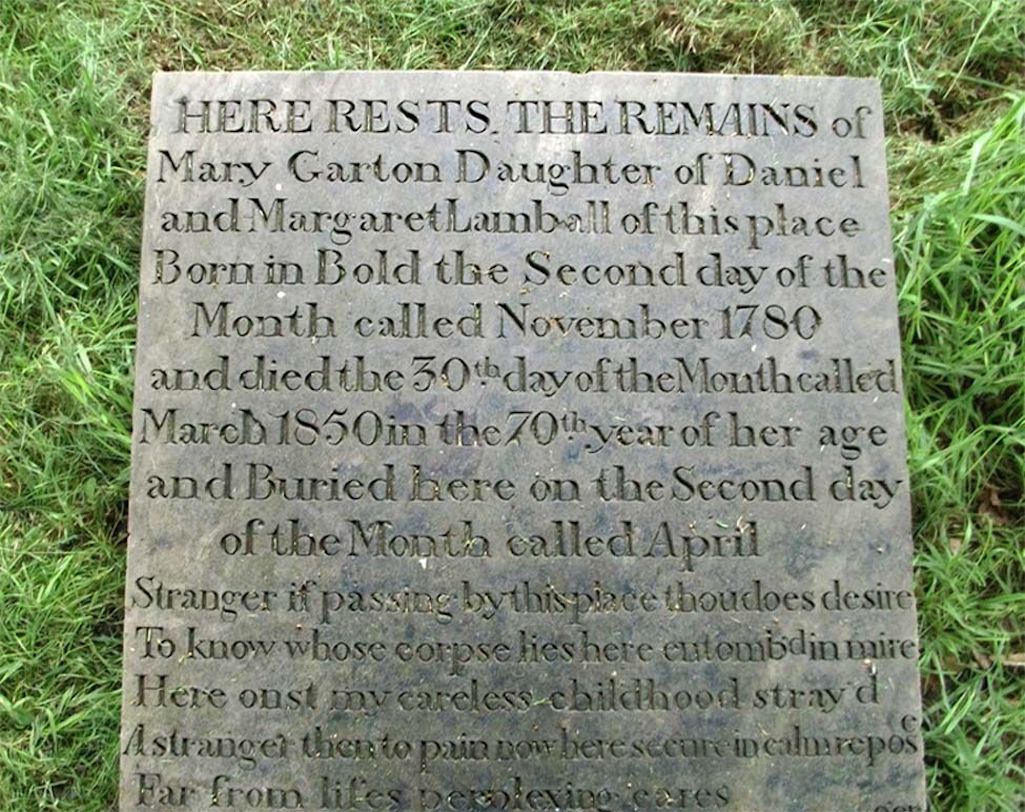
Part of the memorial to Mary Garton which lies flat on the ground at the front of St. Nicholas Church in Sutton

Memorial to Mary Garton which is situated at the front of St.Nicholas Church

Memorial to Mary Garton at St.Nicholas
On the tithe map of 1843, David is shown as occupying two parcels of land close to Sutton Mill. His widowed sister Mary Garton (1780 - 1850) is shown as occupying 12 areas of land around the mill and the dam, together with the lake itself. When Mary died in 1850 she was one of the first to be buried in the new Sutton Parish churchyard. David Lamb not only arranged his sister’s burial but composed a lengthy poetic epitaph for her flat grave memorial that’s situated in front of St.Nicholas Church.
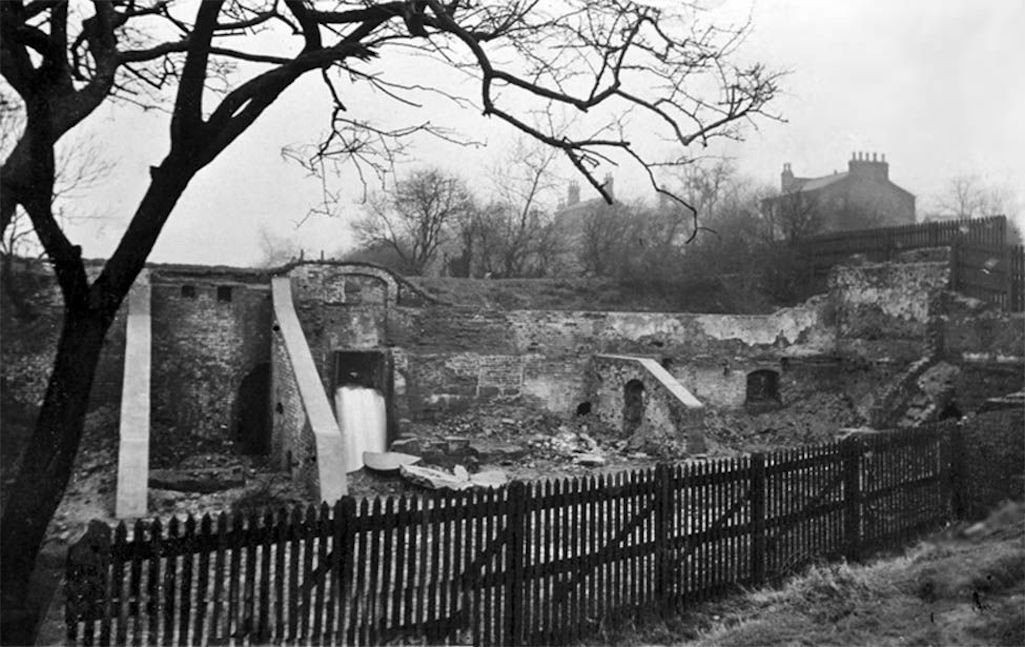
The ruins of the old Sutton Mills pictured around 1910 - Note Mill House at the top right of the photo

The ruins of Sutton Mills around 1910 - Note Mill House at the top right

Sutton Mill ruins around 1910
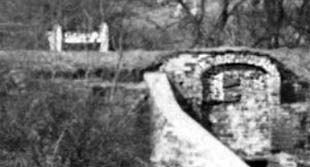
the water to the Sutton corn mill
The Lamb family mainly resided in Mill Brow or Mill Lane, not far from Sutton Mill with Mill House believed to have been the miller's house. However in the 1851 census David’s second son Daniel is listed as an agricultural labourer living in Marshalls Cross. Soon other members of the family would be seeking other occupations.
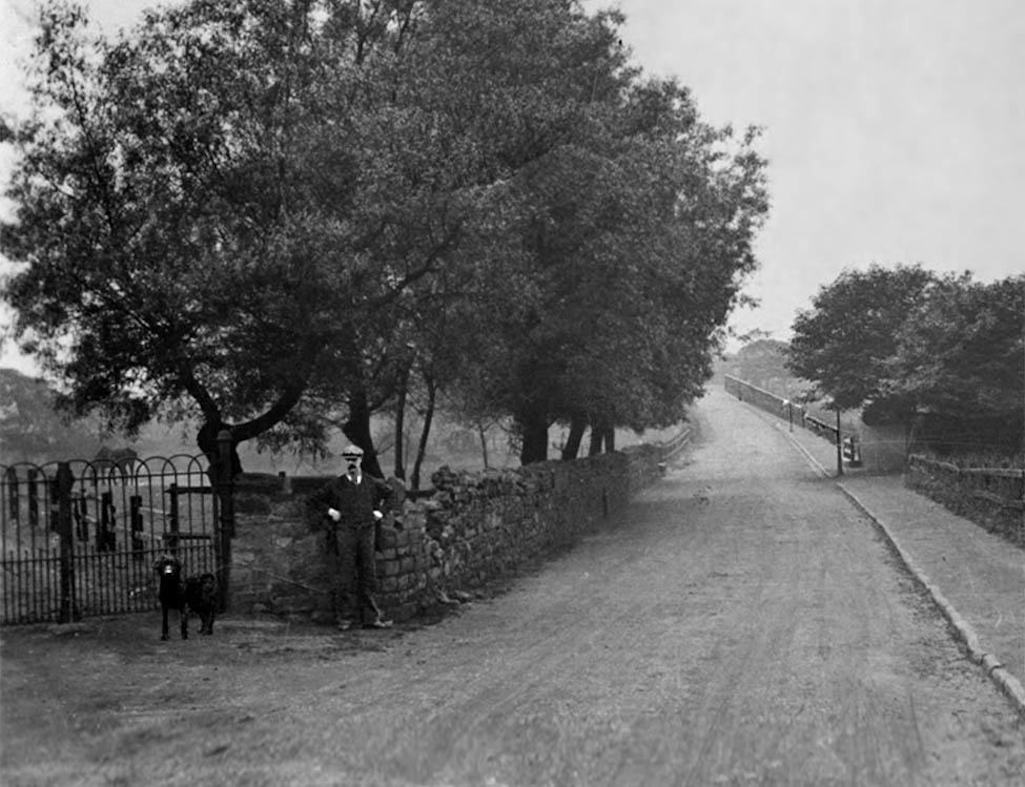
Looking up Mill Lane from where the Wheatsheaf now is, with on the left the brook access to Leach Farm, Mill Brow & Sutton Mill

Looking up Mill Lane from where the Wheatsheaf now is, with on the left the brook access to Leach Farm, Mill Brow and the Sutton Mill

Looking up Mill Lane in Sutton from where the Wheatsheaf pub now is
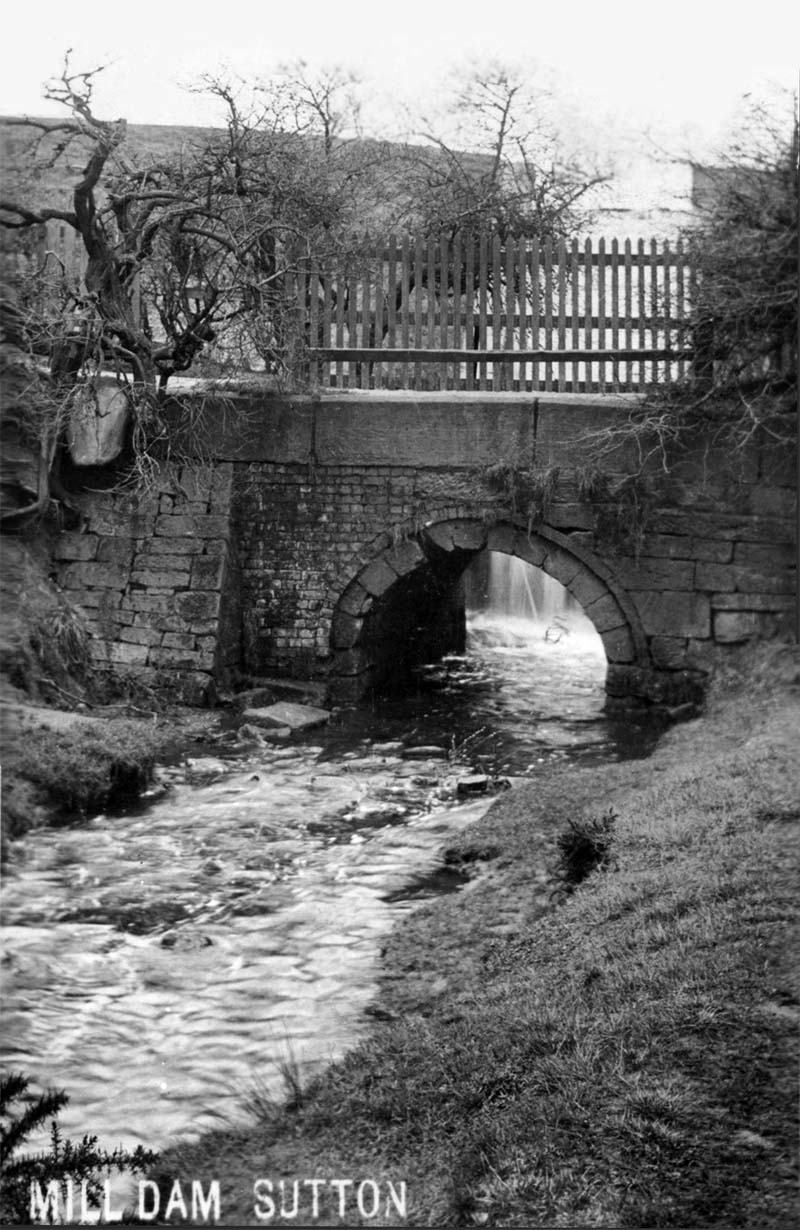
A picture postcard c.1910 of Sutton / Pendlebury Brook leaving Mill Dam with the waterfall in the background

Sutton Brook leaving Mill Dam c.1910 with waterfall in the background

Sutton / Pendlebury Brook leaving the Sutton Mill Dam about 1910
Lot 34 concerned a 'valuable and improveable estate' near Marshall’s Cross that had been let to David Lamb. It comprised a house, barn, stable, shippon and garden along with 32 acres of land.Lot 33. The SUTTON MILL, consisting of an excellent and substantially-built water and steam-power corn mill, drying kilns, &c. mill dams, goits, and willow beds; also the Sutton Mill House, substantially and conveniently built, with out-buildings, garden, &c., and a cottage and garden, containing 7a [acres]. 0r [roods]. 33p [perches]. The lease is dated September 20th, 1818, for the lives of David Lamb, then aged 36 years; David Lamb, jun., 15 years; and Silas Lamb, aged 3 years. Annual rent, £5 5s. Also six closes of land, containing 13a. 2r. 5p. held at rack rent by David Lamb; making altogether 20a. 2r. 38p.
A distinction needs to be drawn between ownership of the property and land and of the milling business. The Lambs would have owned the latter but may well have leased the former from the owner. Perhaps the Lambs didn’t get on with the new owner as in 1856 David attempted to let Sutton Mill. He placed advertisements in the Liverpool Mercury which began 'To Be Let, for a term of years, SUTTON WATER and STEAM CORN MILL' and ended with 'N B. None without capital need apply.' Perhaps the owner would only permit the Lambs to break their lease on condition that they found a replacement tenant. The adverts in 1851 and 1856 pose a number of questions, without easy answers, but sickness may have been behind the publication of the second ad.
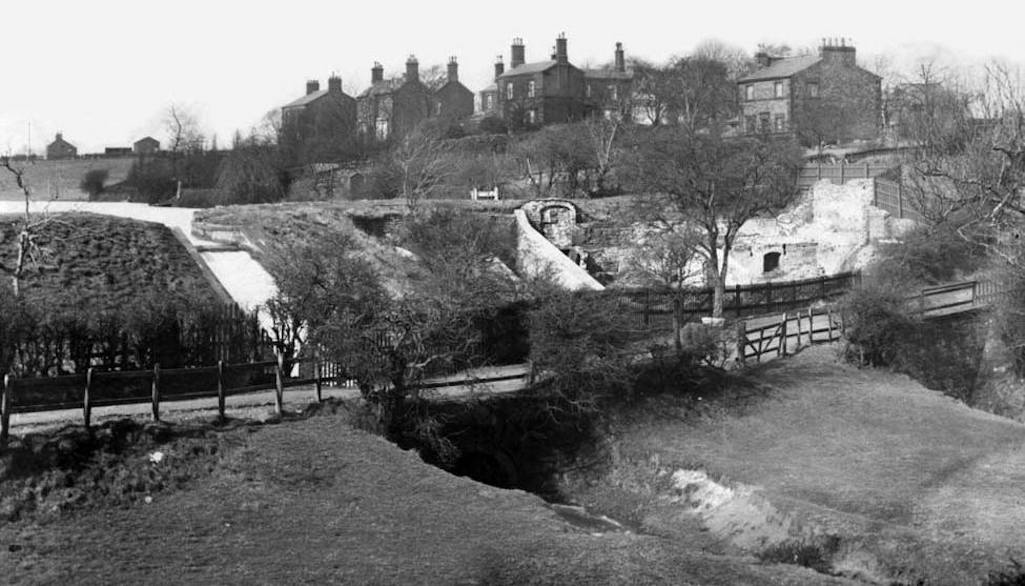
A picture postcard c.1910 showing Mill Brow, waterfall (left) and on the right relics of Sutton Mill

A postcard c.1910 showing Mill Brow and the relics of Sutton Mill

Mill Brow c.1910 with the waterfall (left) and Sutton Mill relics (right)
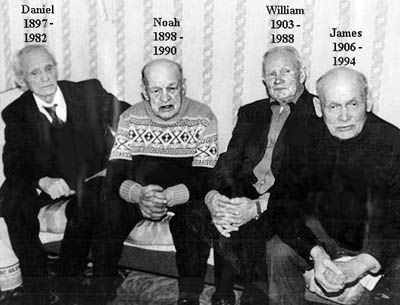
of the miller family - contributed by Jim Lamb
The industrialisation of mill work must have been having an effect on business and the death of David Jnr. in 1863 seams to have sealed its fate. His wife Nancy had passed away three years earlier and by 1871 Sutton Mills were occupied by John Rose and his family and in 1881 by James Rose. That year in the annual St Helens May Day procession, Mr. Rose was a prizewinner in the 'best, neatest, and cleanest tradesmen's cobs in harness' award category.
Some of the members of the Lamb family seem to have moved away, while others like Silas and his wife Sarah lived in Ditch Hillock or in Chester Lane where Daniel’s sons John and Joseph and later eldest son David were resident. In David Lamb’s research into his ancestors, he suggests that Noah or James Lamb may have sold the mill against the wishes of their father to Sutton Glassworks and then decamped abroad with the proceeds. However they were both children at the time of their father's death, so this seems unlikely. Whatever the truth, Sutton Mill had had its day and by 1894, if not earlier, it had become disused. The ruins of the old mill remained on the site for many years and seem to have been removed during the 1950s.
The waterways in and around the Sutton Mill were quite different in the 19th century to what they are now. The lake was much larger, extending all the way to Clock Face Road. At its opposite easterly side, the brook ran from the waterfall and the mill to the Brooklands Dam via the so-called ‘Dickies Bruk’ and then through Sutton Leach. ‘Leach’ means a stream running through boggy or swampy ground, which was what was found by the Wheatsheaf. However in the 1950s, St. Helens Corporation deepened the brook and tipped material such as refuse onto this ground. As a result the boggy area has now disappeared, and so has Brooklands Dam.
The area around the waterfall by Mill Brow has for many years been locally known as the Wash, however its nature and usage has changed. Frank Bamber (1910 – 2001) described what it was like in his memoir Clog Clatters in Old Sutton:
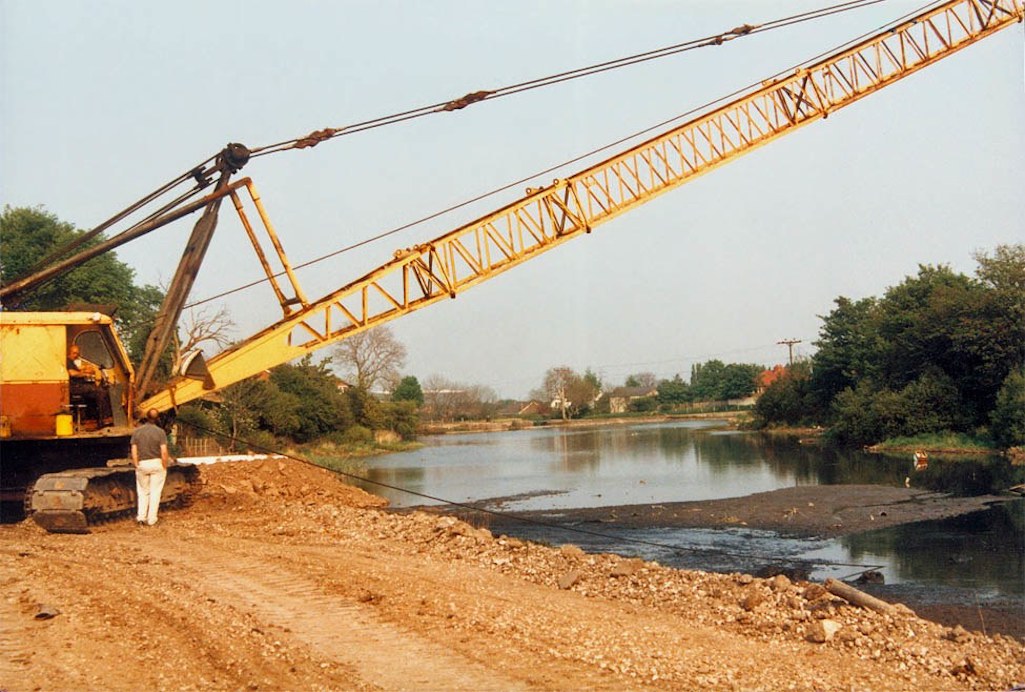
Groundwork Trust work in 1987 to create the Sutton Mill Dam wildlife park - Contributed by Jim Lamb

Groundwork Trust work in 1987 to create the Sutton Mill Dam nature park

Groundwork Trust at work in 1987 to create the wildlife nature park



